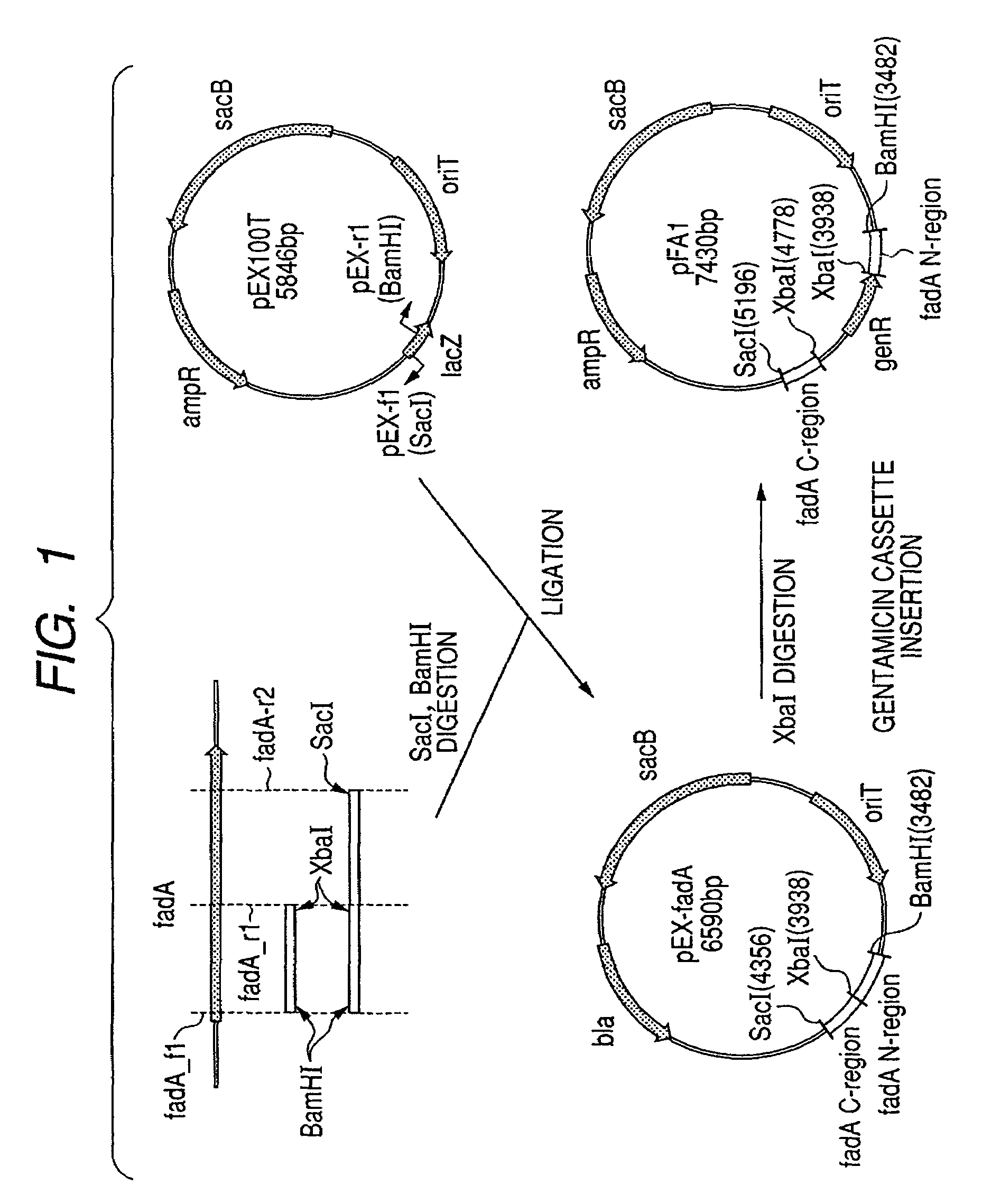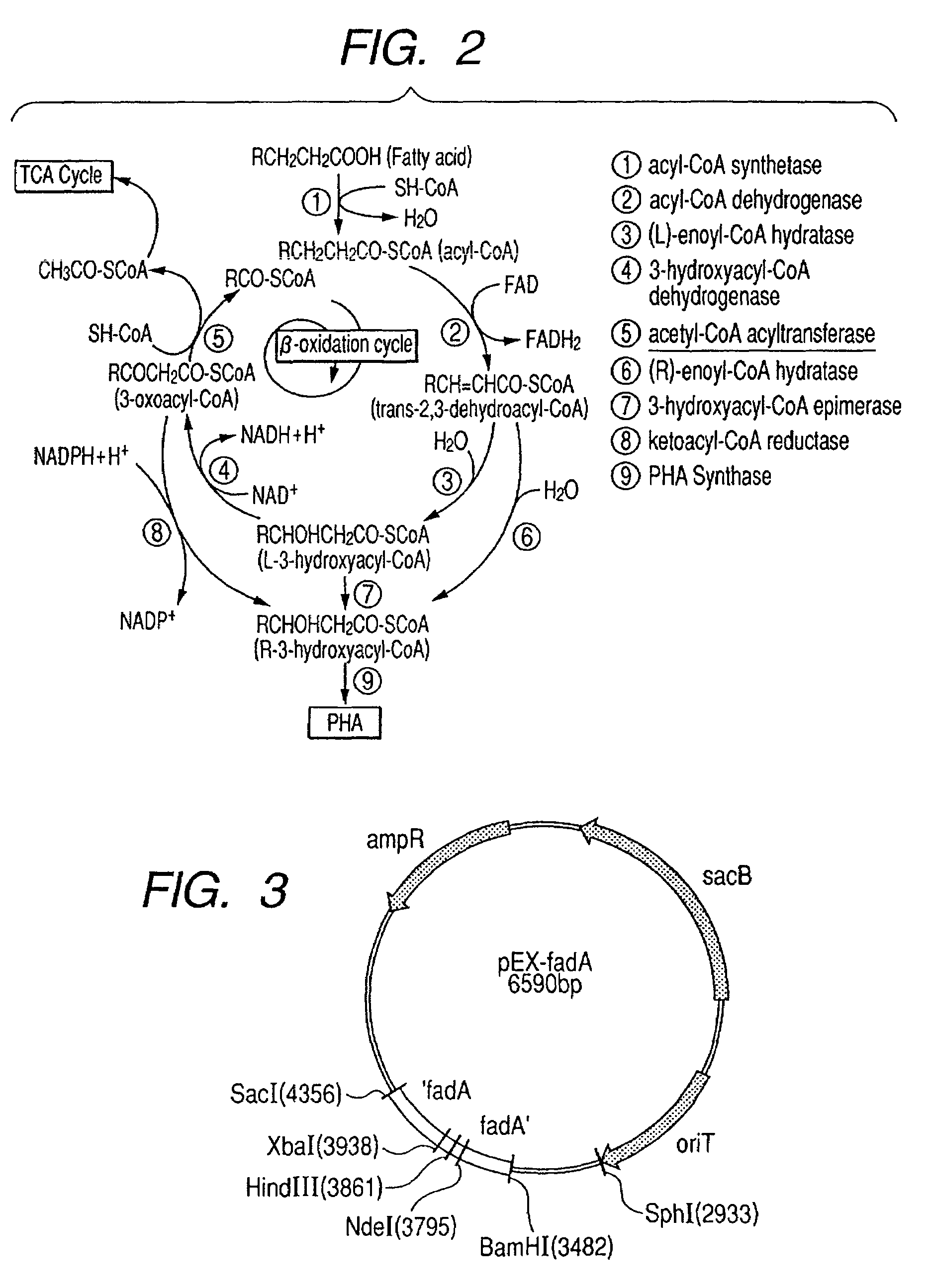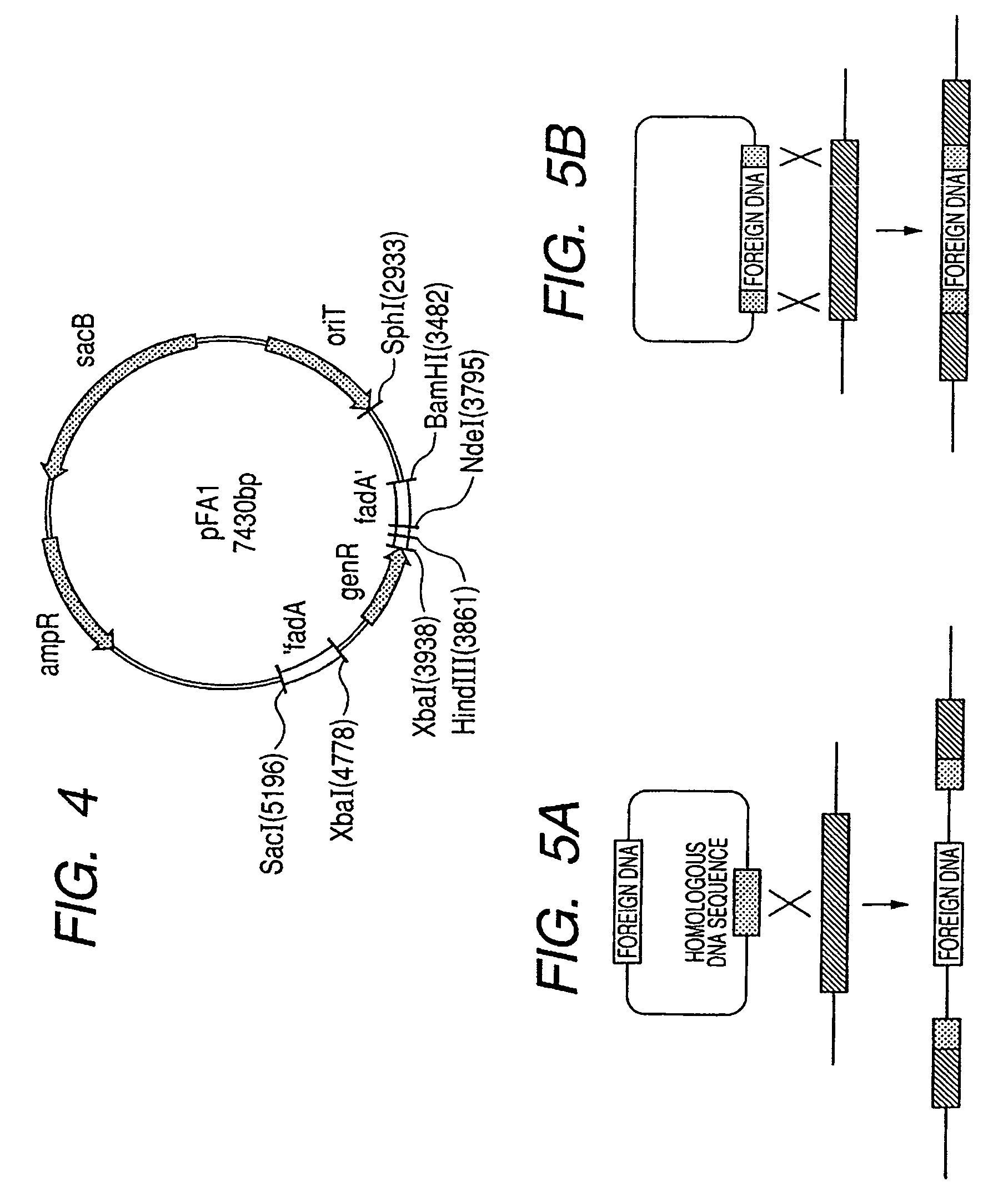Acetyl-CoA acyltransferase gene disrupted bacterium for producing polyhydroxyalkanoate and method for producing polyhydroxyalkanoate using the same
a technology of acyltransferase and acetylcoa, which is applied in the direction of transferases, enzymology, and bacteria based processes, can solve the problems of reducing the yield of synthesized pha, limiting the amount of alkanoate which can be used as a substrate of pha, and not being able to generate acetyl-coa by -oxidation in such a way, and achieves high purity
- Summary
- Abstract
- Description
- Claims
- Application Information
AI Technical Summary
Benefits of technology
Problems solved by technology
Method used
Image
Examples
example 1
[0327]As a result of a preliminary examination of the antibiotic-resistance of bacterium for producing polyhydroxyalkanoate Pseudomonas sp. YN21 strain (FERM BP-08569), it was found that it was resistant to ampicillin and chloramphenicol and sensitive to gentamicin, and therefore, an acetyl-CoA acyltransferase gene targetting vector was constructed using gentamicin as a marker. The constructed gene disruption vector is a circular plasmid DNA containing a partial sequence of from base number 216 to base number 1144 of the base sequence shown in SEQ ID NO: 1 (pFA1; SEQ ID NO: 10). The procedure is dedcribed below. FIG. 1 illustrates the outline of the procedure.
1) Preparation of Genomic DNA
[0328]Pseudomonas sp. YN21 strain was cultured in M9 culture medium containing 0.5% (w / v) of polypeptone at 30° C. for 24 hours. After harvesting the bacterial cells from the culture broth, genomic DNA of YN21 strain was prepared using Wizard, Genomic DNA Purification System (product of Promega Corp...
example 2
[0347]Acquisition of Pseudomonas sp. FA1 strain (FERM BP-08572), bacterium for producing polyhydroxyalkanoate in which the acetyl-CoA acyltransferase gene is disrupted
[0348]Mobilizing strain Escherichia coli S17-1 (ATCC No. 47055) was transformed with the targeting vector for an acetyl-CoA acyltransferase gene (plasmid pFA1, SEQ ID NO: 10) constructed in Example 1 by electroporation method. Electroporation was conducted under the conditions of 2.5 kV, 25 μF and 2000 Ω, with a cell having a gap of 0.2 cm (Gene Pulsar cuvette 0.2 cm, product made in Bio-Rad Laboratories, Inc.) using a commercially available electroporation device (Gene Pulser, product made in Bio-Rad Laboratories, Inc.). The pFA1 transformant of S17-1 strain acquired as a colony which could multiply on an LB agar plate containing 15 μg / ml of gentamicin was subjected to shake culturing in 5 ml of LB liquid culture medium containing 100 μg / ml of ampicillin at 30° C. for 12 hours. Similarly, Pseudomonas sp. YN21 strain w...
example 3
Production of PHA Using FA1 Strain in which the Acetyl-CoA Acyltransferase Gene is Disrupted
[0354]FA1 strain or YN21 strain as control were inoculated to 200 mL of M9 culture medium containing 0.2% (w / v) of polypeptone, 0.2% (w / v) of glucose and 0.1% (v / v) of nonanoic acid, and shake cultured at 30° C. with 125 strokes / min. The bacterial cells were collected by centrifugal separation in 90 hours and freeze-dried after washed with a cold methanol once. This freeze-dried pellet was suspended in 100 mL of chloroform and agitated at 60° C. for 20 hours to extract PHA. The extract was filtered with a membrane filter having a pore size of 0.45 μm, then concentrated with rotary evaporator and the concentrate was allowed to deposit again in cold methanol and only the precipitation was collected and vacuum dried to obtain PHA. The molecular weight of the obtained PHA was measured by gel permeation chromatography (GPC; Tosoh HLC-8020, column: Polymer laboratory PLgel MIXED-C (5 μm), solvent: ...
PUM
| Property | Measurement | Unit |
|---|---|---|
| temperature | aaaaa | aaaaa |
| temperature | aaaaa | aaaaa |
| temperature | aaaaa | aaaaa |
Abstract
Description
Claims
Application Information
 Login to View More
Login to View More - R&D
- Intellectual Property
- Life Sciences
- Materials
- Tech Scout
- Unparalleled Data Quality
- Higher Quality Content
- 60% Fewer Hallucinations
Browse by: Latest US Patents, China's latest patents, Technical Efficacy Thesaurus, Application Domain, Technology Topic, Popular Technical Reports.
© 2025 PatSnap. All rights reserved.Legal|Privacy policy|Modern Slavery Act Transparency Statement|Sitemap|About US| Contact US: help@patsnap.com



